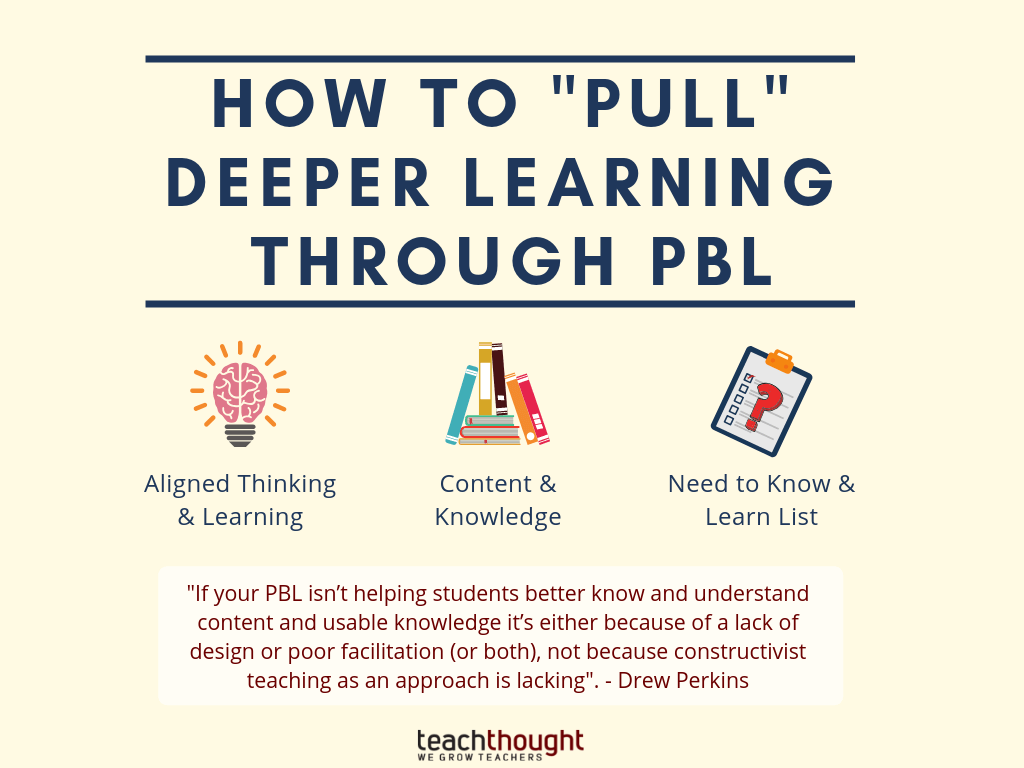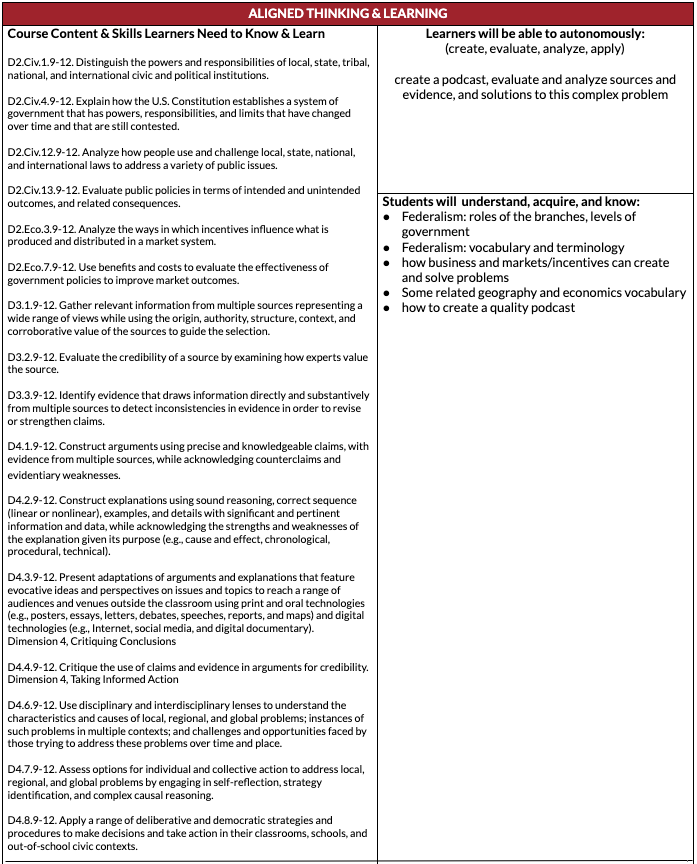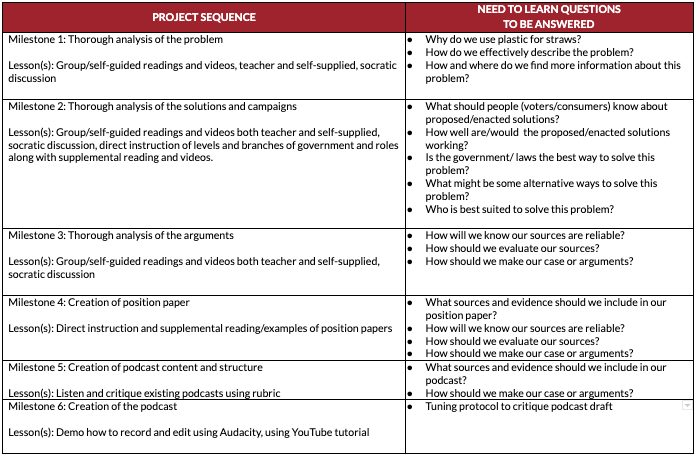
How Can You ‘Pull’ Deeper Learning Through PBL?
contributed by Drew Perkins
One criticism of constructivist, some might say progressive, education (and in particular PBL) is that it lacks ‘real content’ learning by students.
This might be true of poor constructivist teachers in the same way that it’s likely true of poor traditional, more didactic teachers. In TeachThought Podcast discussions and other blog pieces, I have argued that quality PBL design and implementation is quite effective in helping students learn content more deeply.
Of course, the key is the quality of the design and implementation. We hope our Straw Project Exemplar (Google Doc: In-Depth Project Planner) shows how the design of a project can effectively pull deeper learning from students in a way that builds the kind of useable and transferable tacit knowledge that surpasses the more superficial focal knowledge that is unfortunately more common in our classrooms.
Our TeachThought PBL Model includes what we call Aligned Thinking and Learning and Levers of Quality that help grow that learning. In the Straw Project, the content is clearly identified, pulled from C3 Framework for Social Studies standards, and categorized into higher-order thinking vs. basic understanding and knowledge pieces. What do we want them to know about and understand and what do we want them to be able to do, in this case using that knowledge and understanding?
Every quality PBL planning process starts with the thinking and learning, in this case social studies content, that the teacher wants the students to learn.

Next, the Straw Project designer identified what that content learning might look like in the form of ‘Need to Know and Learn’ questions. This is helpful because we’re after the dynamic of teaching that pulls learning from the learners instead of pushes it at them from the teacher.
As the project kicks off, and throughout the duration, the facilitator works to pull these questions from his or her students as necessary to think and learn about in order to answer the Driving Question (How might we help our state representative and community make better decisions about plastic straw bans?).
In the section below from the In-Depth Project Planner, you’ll also note these questions are broken into sections of the project with corresponding Milestones and notes on how these content pieces and questions might be taught.

As the project continues to the demonstration of understanding you would see evidence of the other PBL Model Levers of Quality like Meaningful Assessment and places for student Autonomy. To be clear, not all PBL need be this complex in content, process, or product but it’s the action of intentional design for deeper learning that should be the constant.
If your PBL isn’t helping students better know and understand content and usable knowledge it’s either because of a lack of design or poor facilitation (or both), not because constructivist teaching as an approach is lacking.
